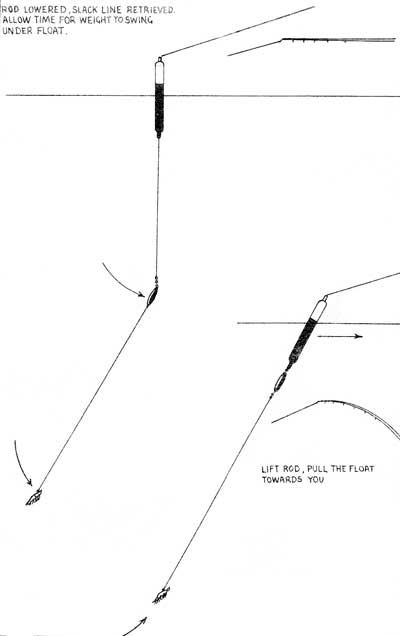(5) June 1975, Alexander's rubber band, by Bob Alexander.
There are times when you are bass fishing when the lure speed or action needs assistance from a float. So to obtain the correct action, I set up a sliding-float rig.
needs assistance from a float. So to obtain the correct action, I set up a sliding-float rig.
After casting-out, I allow sufficient time for the lure to settle and then retrieve it in a series of slow jerks.
This method works well with an artificial prawn, but it can be used with most lures, including sandeels.
It's also useful to use a float when a long cast is required. Up to three ounces of lead can be used to get the float out. But always make sure you stick to the long pencil type of float as this gives you an indication of the line angle beneath the float on the retrieve and tells you the speed and depth of the lure.
After you've cast out your float, keep the rod tip down. Then, when the rig hits the water, lift the rod tip immediately so that it straightens the rig, and prevents the lure fouling on the float.
Power station
Always keep the lead weight as far away as possible from the hook, at least five feet. Personally I fish with a trace about eight feet long.
five feet. Personally I fish with a trace about eight feet long.
Tie the lead on by the two swivels to stop it slipping up the line during the cast. And don't use any bright swivels or leads. The Pollack and bass will ignore the lure and keep chasing them instead.
Another time when "spinning with a float" pays off for bass, garfish or mackerel is in a current of fast water such as a power station hot-water outfall. The float can be paid out in the current, and then retrieved slowly back with the lure working at different depths yet keeping clear of any underwater snags.
